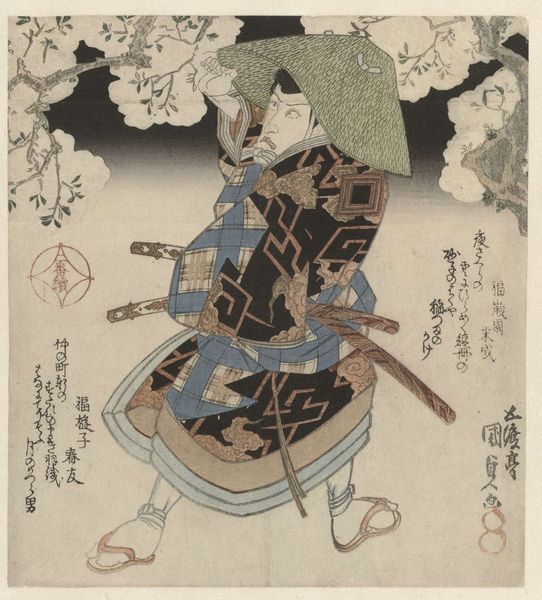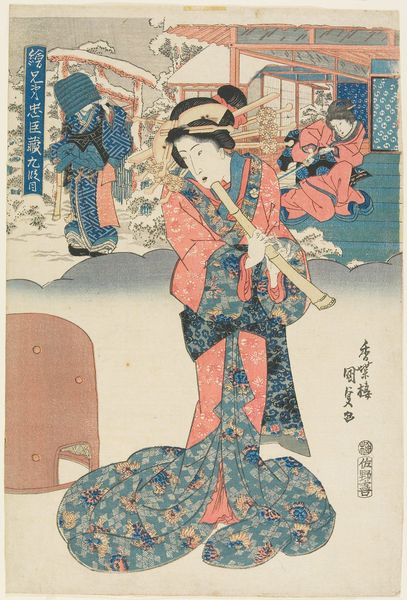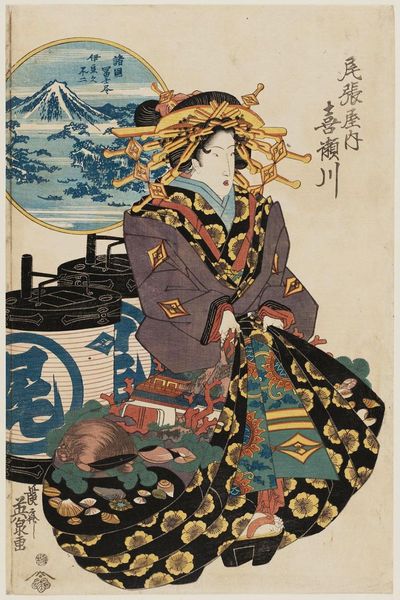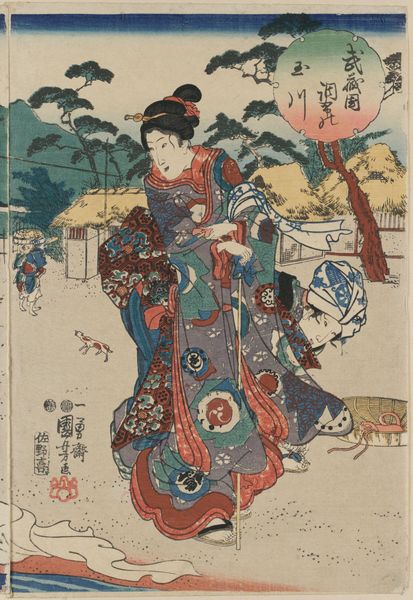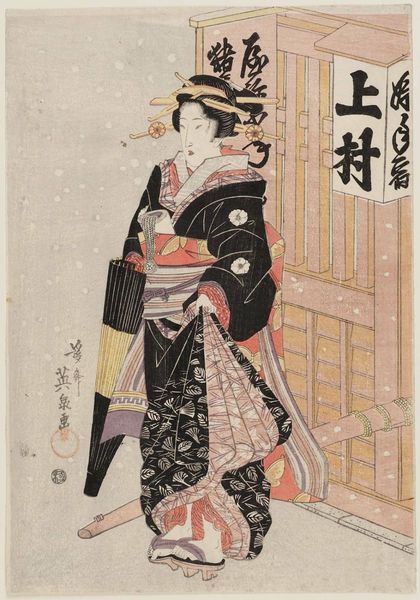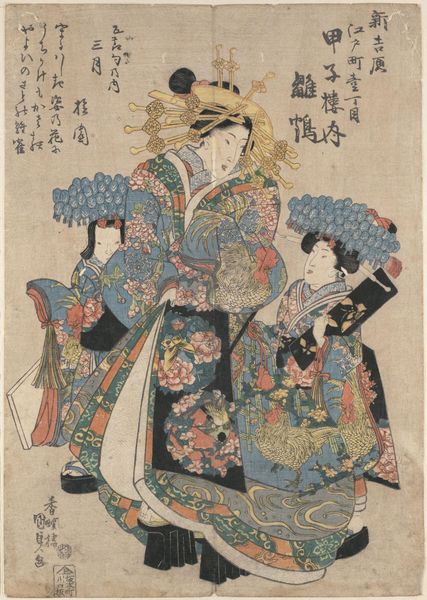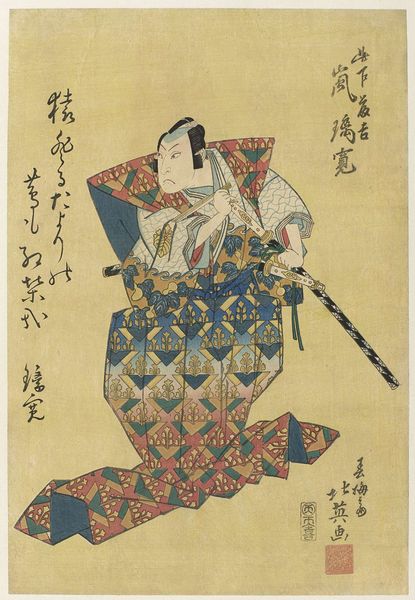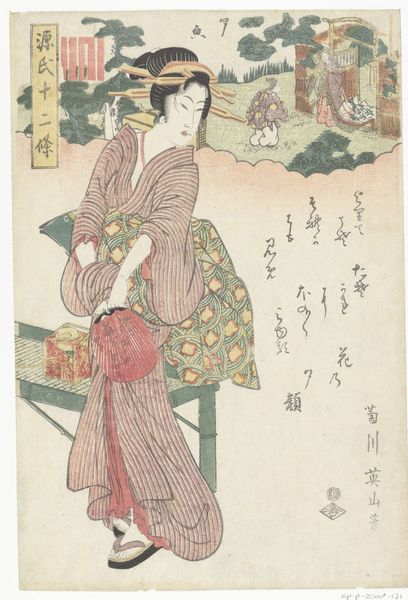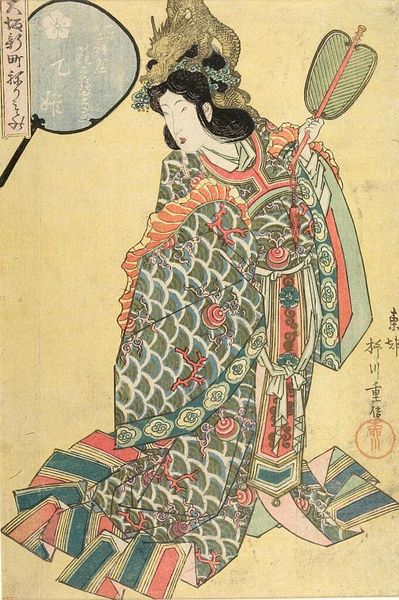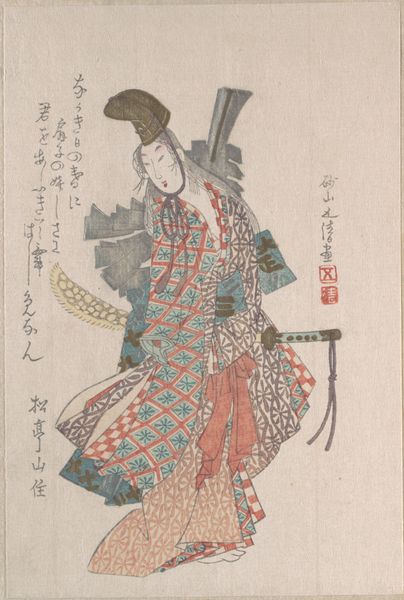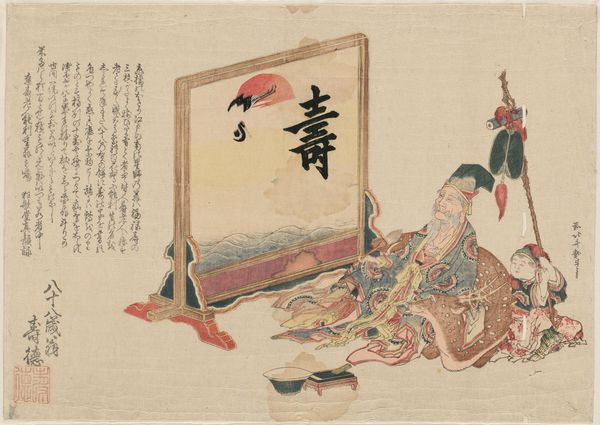
print, woodblock-print
#
portrait
# print
#
asian-art
#
landscape
#
ukiyo-e
#
figuration
#
woodblock-print
#
genre-painting
#
erotic-art
Copyright: Public domain
Curator: So, let's look at this fascinating woodblock print from around 1830 titled "Hiratsuka Station" by Keisai Eisen. What's your immediate impression? Editor: Well, something about this feels melancholy, maybe because of the subdued color palette. It’s elegant, definitely stylish. She almost seems trapped in the moment, lost in her thoughts... or perhaps waiting? Curator: Indeed, that pensiveness is a hallmark of the ukiyo-e genre, capturing fleeting moments and the transient nature of beauty. And she’s definitely making a statement – this isn’t just a genre painting but arguably one focused on erotic undertones, meant for the sophisticated urban audience of the time. Consider her gaze, her slightly suggestive pose… Editor: The patterns are doing interesting things, too—the white leaves against that dark blue, but also the geometrical checks in the lower left corner give the print a push and pull. I think this play on pattern really emphasizes the artifice and maybe also the vulnerability of her role. She almost looks like she’s playing a part. Curator: Absolutely. Her identity is both foregrounded and obscured. And notice the broader setting of Hiratsuka Station. Eisen's situated her – a courtesan or high ranking oiran, arguably waiting to travel – in this bustling location with other travelers around. Editor: But it's dreamlike, almost faded, you know? Like the memory of a journey, or a play you once saw. What strikes me, as I stare longer, is how artful that restraint really is—how much story can be layered into a quiet picture! Curator: Precisely. And through that seeming restraint, Eisen invites us to consider not only individual stories but also the complexities of Edo society, the role of women within it, and the pervasive gaze that shaped their representation. The woman presented occupies complex spaces that both embrace the norms of the time but resist also, don't you think? Editor: You've given me so much to think about – I came for the melancholy, but now I am fascinated. Curator: And that's what makes engaging with works like these so rewarding – constant dialogue between the image and ourselves and between its time and ours.
Comments
No comments
Be the first to comment and join the conversation on the ultimate creative platform.
